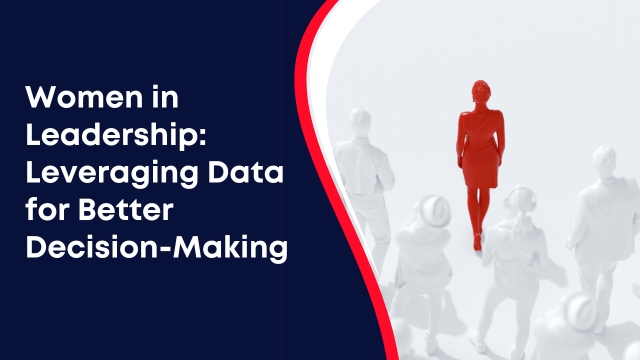In today’s business world, data is everywhere. It drives decisions, shapes strategies, and influences outcomes. Effectively using data can empower female executives to lead their organisations confidently. This article explores the importance of data in decision-making and offers practical tips for leveraging it.
Data is information that helps us understand trends, behaviours, and patterns. It comes in many forms, such as sales figures, customer feedback, and market research. For executives, data provides valuable insights that inform decisions.
Why Data Matters
- Informed Choices: Relying on data helps leaders make choices based on facts rather than gut feelings. This can lead to better outcomes and reduce risks.
- Identifying Trends: Data analysis allows executives to spot trends in the market and customer behaviour. Understanding these trends helps in adapting strategies effectively.
- Measuring Performance: Data provides metrics to evaluate success. It allows leaders to assess what works and what doesn’t, enabling continuous improvement.
- Building Credibility: Using data in discussions enhances credibility. It shows that decisions are grounded in research, which can earn the respect of colleagues and stakeholders.
Data-Driven Decision-Making in Action
For female executives, being data-driven can set a powerful example. Here are some ways to incorporate data into decision-making:
1. Start with Clear Goals
Before diving into data, it’s essential to define your objectives. What do you want to achieve? Clear goals will guide your data analysis.
- Example: If your goal is to increase sales, focus on data related to customer preferences, market trends, and competitive analysis.
2. Gather Relevant Data
Collect data that is relevant to your goals. This can include quantitative data (numbers and statistics) and qualitative data (opinions and experiences).
- Quantitative Data: Sales figures, website traffic, and customer demographics.
- Qualitative Data: Customer feedback, employee surveys, and market research.
3. Analyze the Data
Once you have collected data, the next step is to analyze it. Look for patterns, correlations, and insights that can inform your decisions.
- Tools for Analysis: Use software like Excel, Tableau, or Google Analytics to visualize data and make it easier to understand.
4. Make Informed Decisions
After analyzing the data, it’s time to make decisions. Use the insights gained to choose the best course of action.
- Data-Driven Decisions: Instead of guessing which marketing strategy will work, base your choice on data showing which methods have succeeded.
Overcoming Challenges
While data can be incredibly useful, there are challenges that female executives may face:
1. Data Overload
With so much data available, it can be overwhelming. Focus on what is most relevant to your goals.
2. Lack of Resources
Some organizations may not have the resources for advanced data analysis. However, many free or low-cost tools are available.
3. Trusting the Data
Sometimes, it’s easy to become sceptical of data. It’s important to remember that data is a tool, not an absolute truth.
Overcoming Challenges
While data can be incredibly useful, there are challenges that female executives may face:
1. Data Overload
With so much data available, it can be overwhelming. Focus on what is most relevant to your goals.
- Prioritize critical metrics that align with your objectives and avoid getting lost in excessive information.
2. Lack of Resources
Some organizations may not have the resources for advanced data analysis. However, many free or low-cost tools are available.
- Look for online courses or workshops to improve your data analysis skills. Many resources are tailored for beginners.
3. Trusting the Data
Sometimes, it’s easy to become sceptical of data. It’s important to remember that data is a tool, not an absolute truth.
- Always consider the context behind the data. Look at the methodology used to collect it and be aware of any biases.
As challenges arise, remember that data is a powerful ally. Building a culture that values data can empower your team and enhance your organization’s success. Embrace the journey of becoming a data-driven leader and watch your impact grow.





